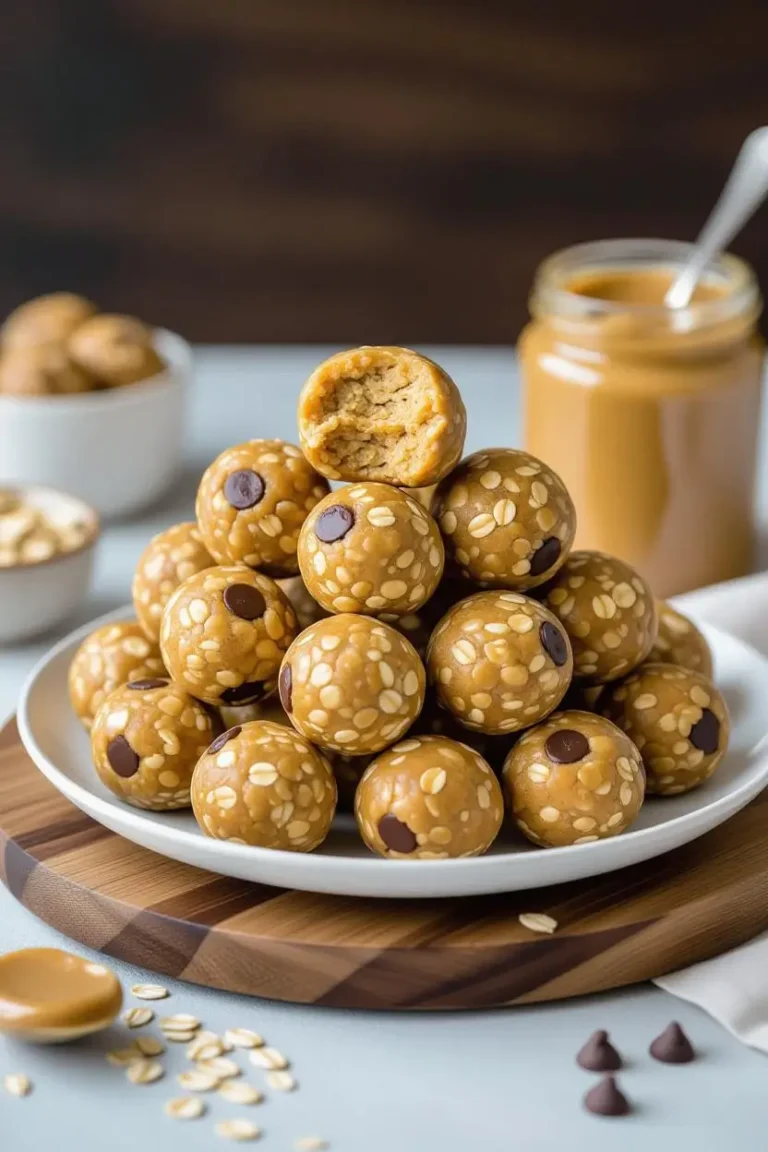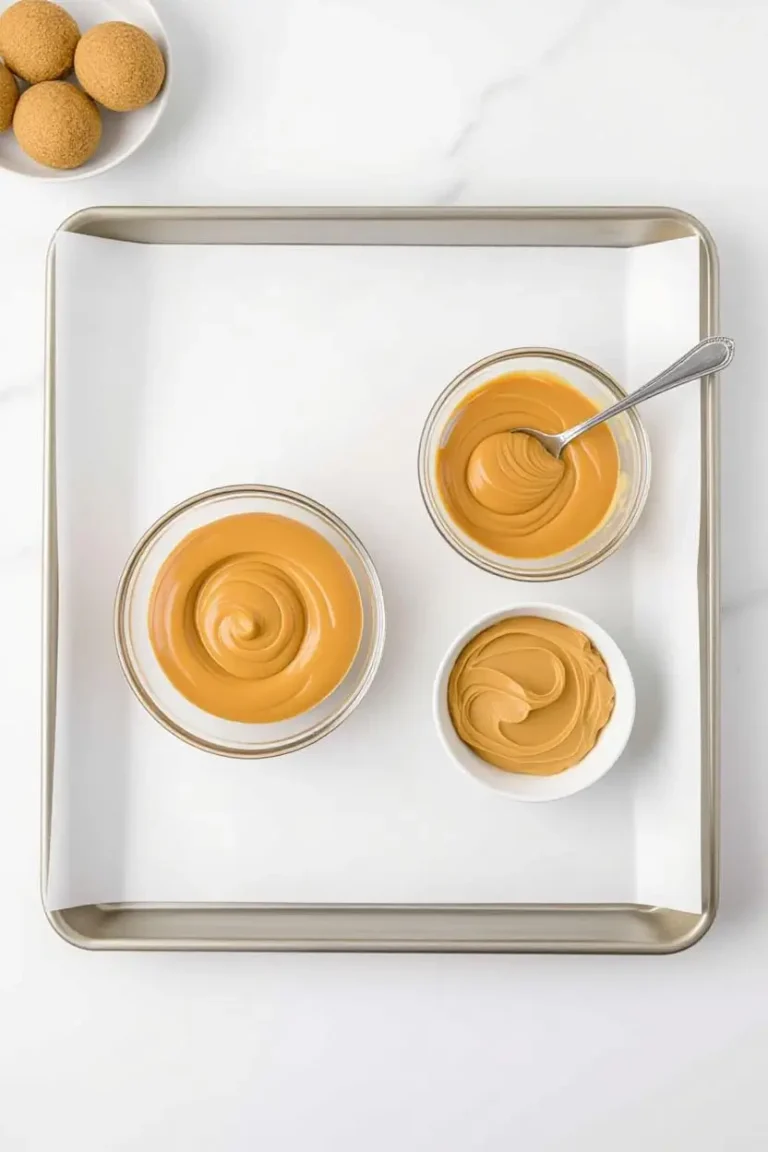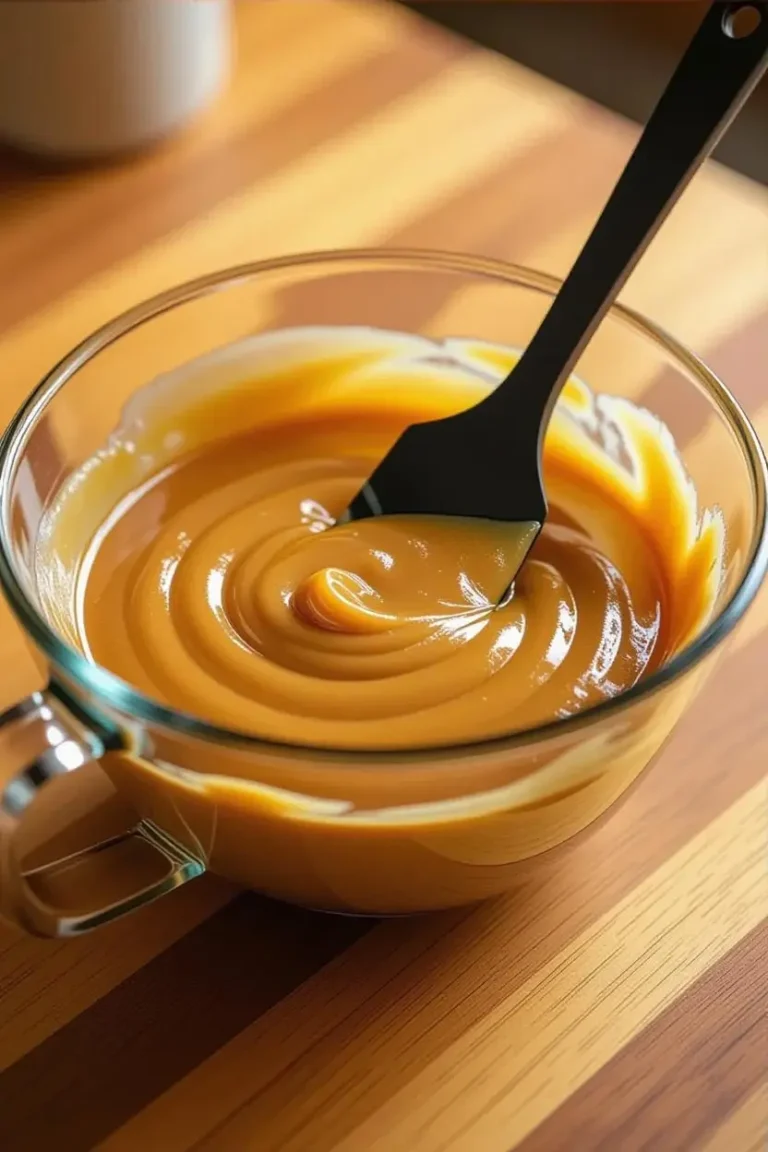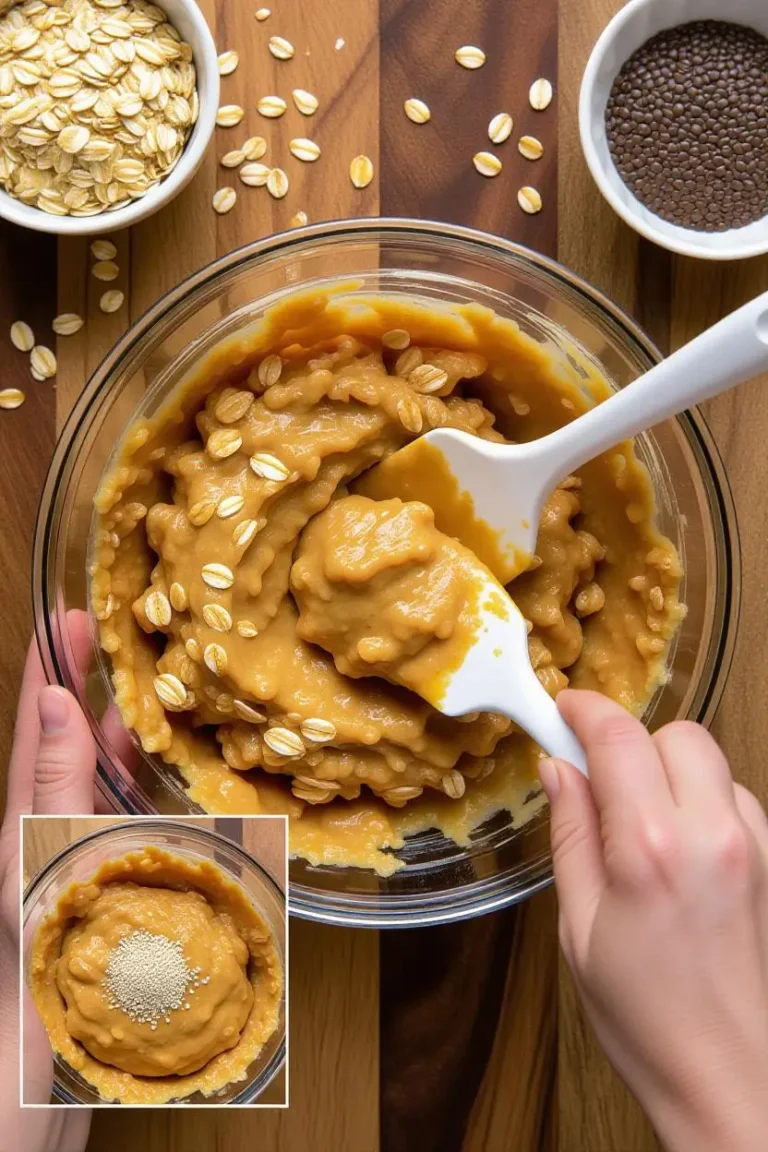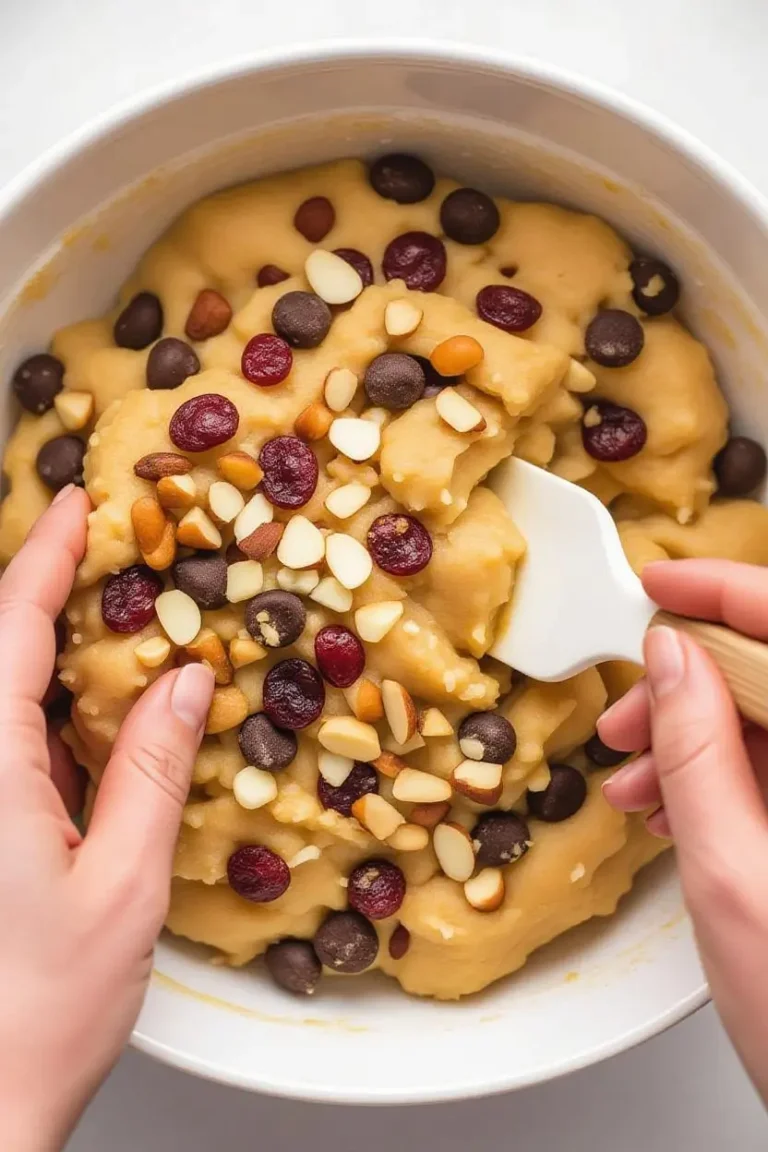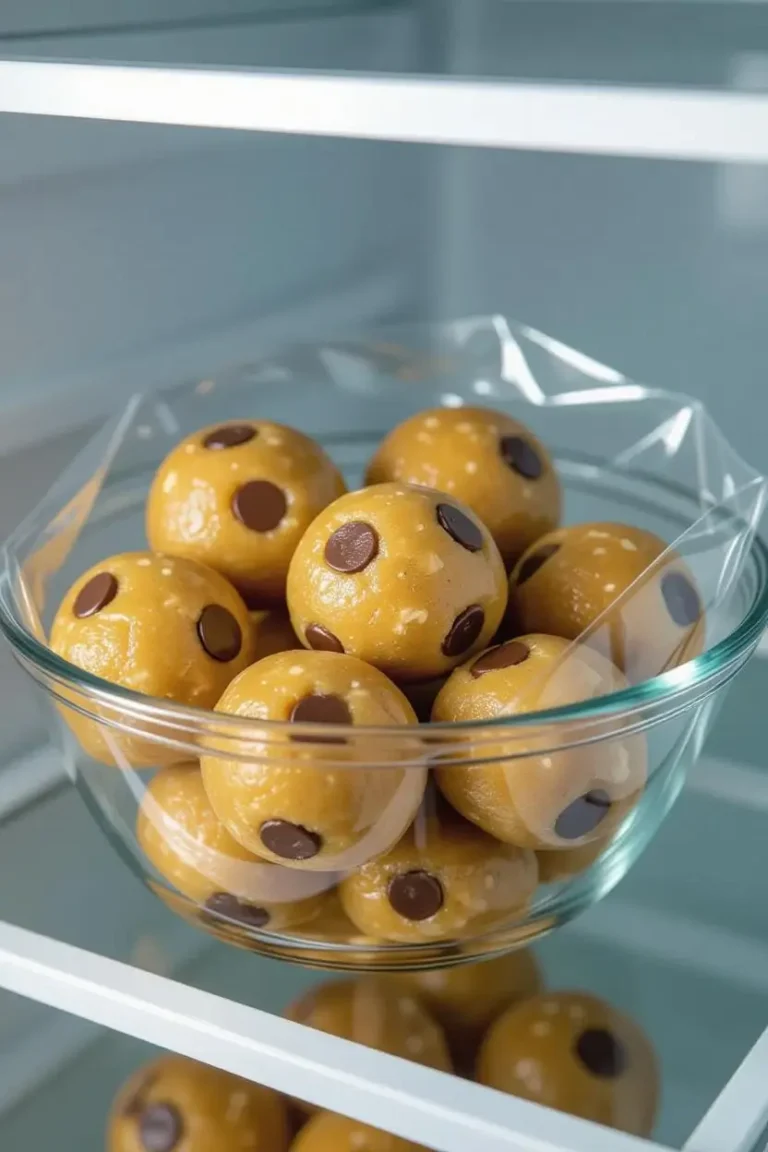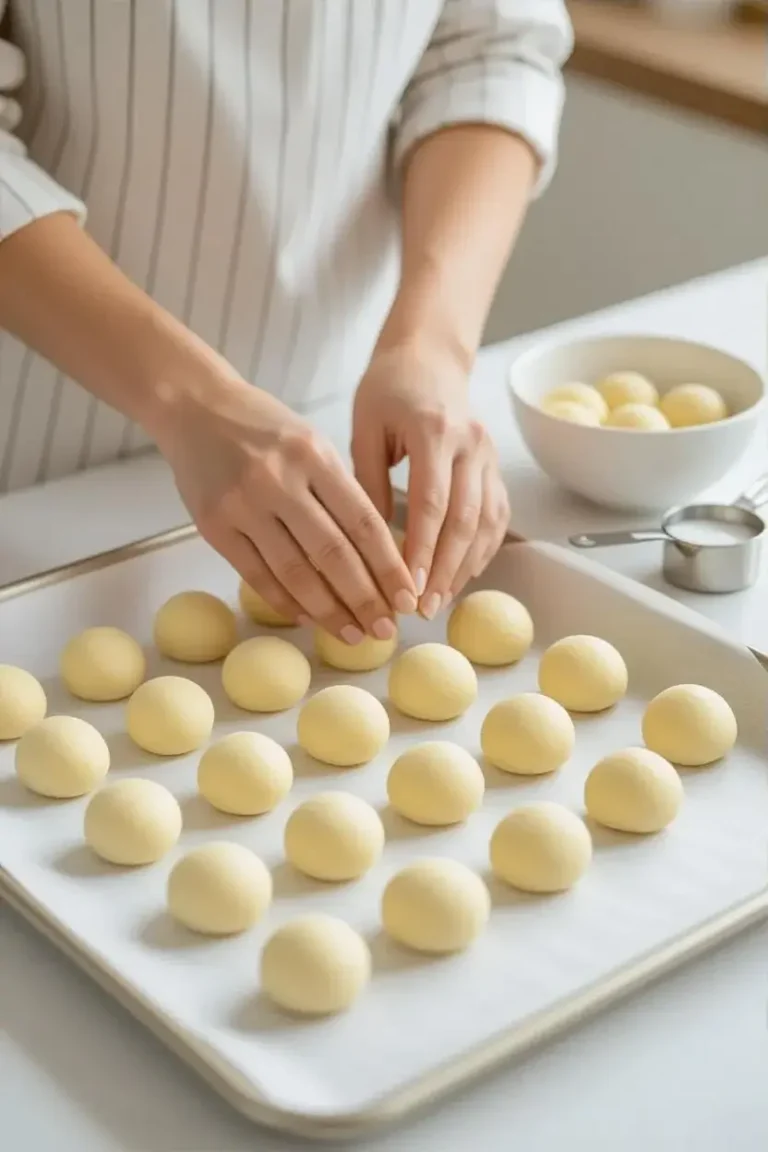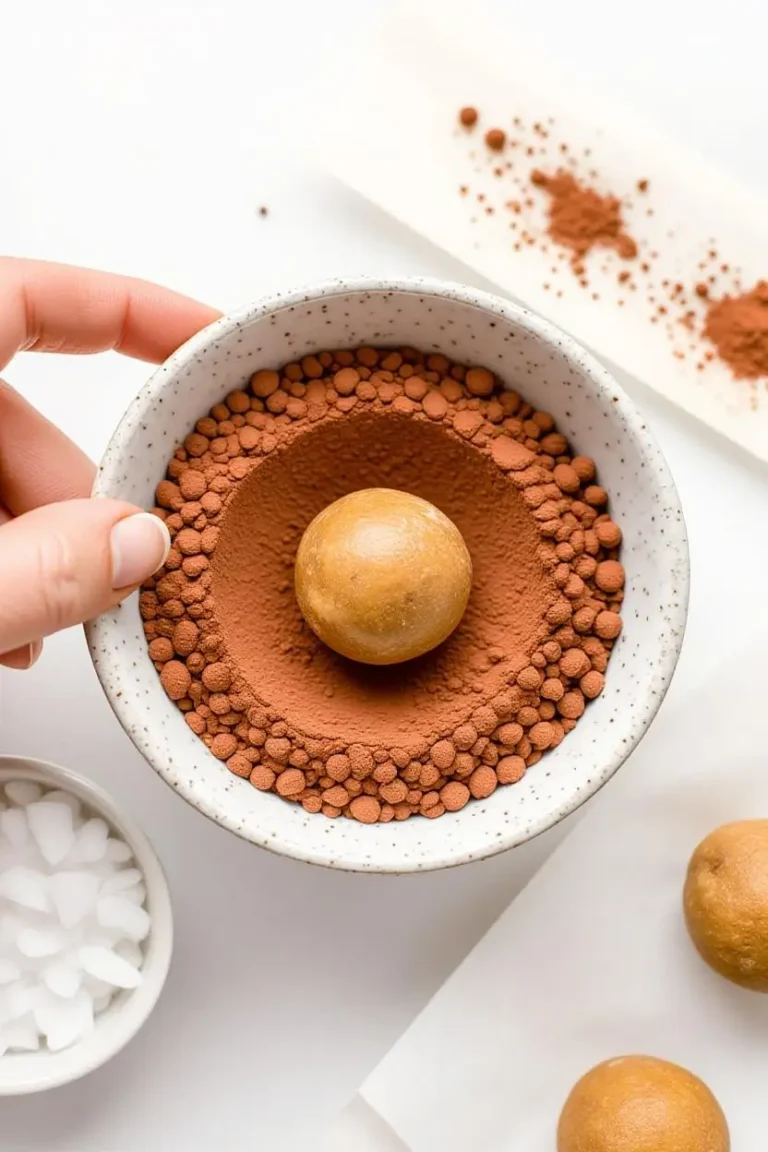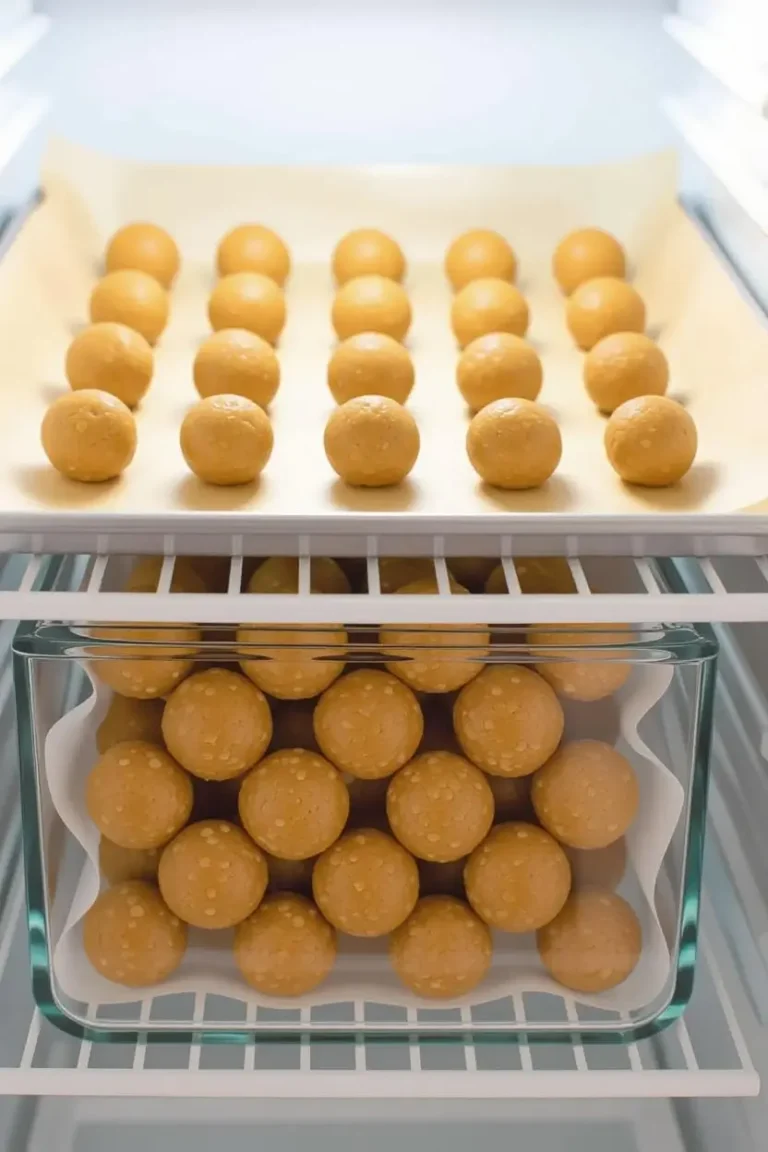Peanut Butter Energy Balls: How to Make Perfect
After testing 47 variations of peanut butter protein balls over three years, I’ve perfected this oatmeal protein balls recipe that delivers the ideal balance of creamy texture, natural sweetness, and sustained energy. The secret lies in the precise ratio of sticky binders to dry ingredients most energy balls recipes fail because they’re either too crumbly or impossibly sticky to roll.
These protein ball recipes solve the common problems I’ve heard from my community of 50,000+ home cooks: they fall apart when stored, taste chalky from protein powder, or require expensive specialty ingredients. My formula uses pantry staples you already have, creates perfectly rollable dough every time, and delivers 6g of protein per ball without any artificial ingredients.
Whether you need a pre-workout boost, afternoon pick-me-up, or healthy dessert alternative, these peanut butter protein balls with oats provide lasting energy from whole food sources. The no-bake preparation means you can make a batch in under 15 minutes no special equipment, no oven heating, just mix and chill. My testing network reports these stay fresh for two weeks refrigerated and actually improve in flavor after 24 hours as the ingredients meld together.
Ingredients
Instructions
STEP 1: PREPARE YOUR WORKSPACE
- Line a large baking sheet or plate with parchment paper and set aside. Ensure your peanut butter is at room temperature—if it's cold from the fridge, microwave for 15-20 seconds and stir until smooth. Cold peanut butter creates lumpy, difficult-to-mix dough.Success Indicator: Peanut butter should be easily stirrable and flow slowly off a spoon.
STEP 2: COMBINE WET INGREDIENTS
- In a large mixing bowl, combine the peanut butter, honey, melted coconut oil, vanilla extract, and salt. Stir vigorously with a sturdy spatula for 45-60 seconds until completely homogenous—you should see no streaks of honey or separation. The mixture will be glossy and thick.Troubleshooting Note: If mixture appears separated or grainy, place bowl in warm water bath and continue stirring until smooth.
STEP 3: ADD DRY INGREDIENTS GRADUALLY
- Add the rolled oats and ground flaxseed to the wet mixture. Using a folding motion, incorporate the dry ingredients until no loose oats remain visible (about 2-3 minutes of mixing). The dough should be thick, slightly sticky, but hold together when pressed—similar to cookie dough consistency.Texture Checkpoint: Press a small amount between your fingers. It should compress into a cohesive ball without crumbling or leaving excessive residue on your hands. If too dry, add 1 tablespoon honey; if too wet, add 2 tablespoons oats.
STEP 4: INCORPORATE MIX-INS
- Fold in your chosen mix-ins (chocolate chips, dried fruit, nuts, or coconut) until evenly distributed throughout the dough. Avoid overmixing at this stage to prevent breaking down the add-ins.Pro Tip: For chocolate chip energy balls, reserve 2 tablespoons chips to press into the tops of finished balls for visual appeal.
STEP 5: CHILL THE DOUGH (CRITICAL STEP)
- Cover the bowl with plastic wrap and refrigerate for 20-30 minutes. This firms up the fats and makes rolling significantly easier. Don't skip this—warm dough is nearly impossible to shape cleanly.Temperature Target: Dough should feel cool to touch and hold a thumbprint impression without immediately spreading.
STEP 6: PORTION AND ROLL
- Using a tablespoon measure or 30g cookie scoop, portion the dough into equal amounts. Roll each portion between your palms using gentle but firm pressure, creating smooth spheres about 2.5cm (1 inch) in diameter. If dough sticks to your hands, lightly dampen palms with water or neutral oil.Rolling Technique: Use circular motion with moderate pressure—too light and balls won't compact; too firm and natural oils will release, making them greasy.Yield Check: You should get 18-20 uniform balls from this recipe. If yield is significantly different, recheck measurements.
STEP 7: OPTIONAL COATING APPLICATION
- Immediately after rolling each ball, roll in your chosen coating while still slightly tacky. For cocoa powder coating, place 45g (½ cup) cocoa in a shallow bowl and roll balls gently until evenly covered. Shake off excess.Coating Adhesion Tip: Apply coatings right after rolling for best adhesion. Once chilled, coatings won't stick as well.
STEP 8: FINAL CHILL AND STORAGE
- Arrange finished protein balls on the prepared baking sheet with 1cm spacing. Refrigerate uncovered for 30 minutes to set completely. Once firm, transfer to an airtight container with parchment paper between layers.Firmness Test: Properly chilled energy balls should be firm enough to stack without deforming but yield slightly to pressure.
Expert Tips for Perfect Peanut Butter Energy Balls
INGREDIENT SELECTION SECRETS
Peanut Butter Quality Matters: Natural peanut butter (just peanuts and salt) creates superior texture compared to conventional brands with added oils and sugars. The Kirkland Organic or Trader Joe’s varieties work excellently. Avoid “natural” brands that still separate—choose “no-stir” natural varieties for consistent results.
Oat Selection Impact: Old-fashioned rolled oats provide the ideal chewy texture. Quick oats work but create softer, less toothsome balls. Steel-cut oats are too hard and won’t bind properly—never substitute these.
Flaxseed Functionality: Ground flaxseed acts as both nutritional powerhouse and binding agent. It must be ground (not whole seeds) to provide structure. Store ground flaxseed in the freezer to prevent rancidity—it goes bad quickly at room temperature.
TEXTURE TROUBLESHOOTING MATRIX
PROBLEM: Balls fall apart or are too crumbly
CAUSE: Insufficient binding agent or over-measurement of oats
SOLUTION: Add 2 tablespoons additional honey or peanut butter, one at a time, mixing thoroughly between additions
PREVENTION: Measure oats by spooning into measuring cup and leveling off; don’t pack down
PROBLEM: Dough is too sticky and won’t roll smoothly
CAUSE: Peanut butter too warm, insufficient oats, or high-oil nut butter used
SOLUTION: Refrigerate dough additional 15-20 minutes; add 30g (¼ cup) more oats
PREVENTION: Ensure peanut butter is room temperature but not warm; measure ingredients by weight when possible
PROBLEM: Energy balls taste dry or chalky
CAUSE: Protein powder overuse or insufficient liquid binder
SOLUTION: Reduce protein powder by half and increase honey by 2 tablespoons
PREVENTION: Limit protein powder to 30g maximum per batch; always reduce oats proportionally when adding protein powder
PROBLEM: Balls are greasy or leave oil residue
CAUSE: Over-rolling with too much pressure or high-oil nut butter
SOLUTION: Use lighter pressure when rolling; blot finished balls gently with paper towel
PREVENTION: Choose no-stir natural peanut butter; avoid rolling when hands are warm
ADVANCED TECHNIQUE INSIGHTS
Professional Chef Secret: For competition-quality smooth exteriors, roll balls between two pieces of parchment paper using a small rolling pin—creates perfectly uniform spheres without hand oils affecting surface.
Flavor Development Timing: These peanut butter protein balls actually taste better after 24-48 hours of refrigeration as flavors meld and moisture distributes evenly. Plan ahead when possible.
Scaling Strategy: This recipe doubles and triples perfectly. For meal prep, make triple batches and freeze in single-serving portions—they’re ideal for grab-and-go convenience.
Equipment Optimization: A #40 cookie scoop (1.5 tablespoon capacity) creates perfectly consistent 30g portions and dramatically speeds production. Investment pays off for regular batch makers.
Creative Ways to Serve Your Protein Ball Recipe
PRESENTATION VARIATIONS
Elegant Dessert Plating: Arrange three energy balls on individual dessert plates, dust with cocoa powder through a fine-mesh sieve, and garnish with fresh mint leaves and a few fresh raspberries. This transforms casual snacks into sophisticated gluten-free desserts for dinner parties.
Breakfast Bowl Integration: Crumble one protein ball over Greek yogurt bowls with fresh berries and granola for textural contrast and protein boost. The oatmeal protein balls add satisfying chewiness that complements creamy yogurt perfectly.
Trail Mix Enhancement: Chop energy balls into quarters and mix with raw almonds, dried apricots, and dark chocolate chunks for upgraded hiking snacks with sustained energy release.
Holiday Gift Packaging: Arrange 12-15 balls in clear cellophane bags tied with ribbon, or layer in decorative tins with parchment paper dividers. These make thoughtful, health-conscious gifts that actually get eaten (unlike typical holiday cookies that sit uneaten).
SEASONAL ADAPTATIONS
Fall Harvest Version: Add 2 teaspoons pumpkin pie spice, 60g chopped dried apple pieces, and 45g chopped pecans. Roll in cinnamon-sugar mixture (30g coconut sugar + 3g cinnamon) for cozy autumn flavor.
Winter Holiday Edition: Replace vanilla with peppermint extract (use only ½ teaspoon—it’s potent), add 85g mini dark chocolate chips and 30g crushed candy canes. Roll in cocoa powder mixed with powdered sugar for snow-dusted appearance.
Spring Energy Boost: Incorporate 45g dried cherries, 30g sliced almonds, and zest of one lemon. Roll in unsweetened shredded coconut mixed with freeze-dried strawberry powder for bright, fresh flavor.
Summer Fresh Variation: Add 60g dried pineapple (chopped small), 45g macadamia nuts (chopped), and 30g unsweetened coconut flakes. Roll in toasted coconut for tropical vacation vibes.
DIETARY ACCOMMODATION STRATEGIES
Vegan Peanut Butter Energy Balls: Replace honey with maple syrup or agave nectar (same measurement). Use plant-based protein powder if adding protein boost. Ensure chocolate chips are dairy-free.
Nut-Free School-Safe Version: Substitute sunflower seed butter (SunButter brand works excellently) for peanut butter at 1:1 ratio. Note: mixture may turn green due to chlorophyll reaction with baking soda in some ingredients—completely safe and doesn’t affect flavor.
Keto-Adapted Recipe: Replace oats with 180g almond flour + 60g coconut flour, and honey with powdered erythritol or monk fruit sweetener (start with 80g and adjust to taste). Add extra 15g coconut oil for binding. Net carbs reduce from 12g to approximately 4g per ball.
Protein-Packed Athlete Version: Add 45g vanilla protein powder, 30g hemp hearts, and 2 tablespoons chia seeds. Increase peanut butter by 30g and honey by 2 tablespoons to compensate for extra dry ingredients. Delivers 8-9g protein per ball.
Storage Guide for Your Peanut Butter Protein Balls
IMMEDIATE STORAGE PROTOCOLS
Refrigerator Storage (Recommended): Transfer completely chilled energy balls to an airtight container, layering parchment paper between levels to prevent sticking. Store in the main refrigerator compartment (not the door, where temperature fluctuates) for optimal freshness.
Shelf Life: 10-14 days refrigerated when properly stored. After day 10, check for off-smells or taste—natural nut butters can develop rancid flavors if stored too long.
Container Selection: Glass containers with silicone-sealed lids work best, preventing moisture absorption and maintaining proper texture. Avoid flimsy plastic containers that allow air exchange.
LONG-TERM FREEZING METHODS
Freezer Preparation: Flash-freeze protein balls on a parchment-lined baking sheet for 1-2 hours until solid. This prevents them from fusing together during storage. Once frozen solid, transfer to freezer-safe bags or containers, removing as much air as possible.
Optimal Freezing Duration: 3 months maximum for best quality. While safe beyond this, texture degrades and flavors become muted after extended freezing.
Thawing Protocol: Transfer desired number of balls to refrigerator 2-3 hours before eating, or leave at room temperature for 20-30 minutes. Avoid microwave thawing, which creates uneven soft spots and compromises texture.
Grab-and-Go Convenience: For maximum convenience, freeze in individual silicone muffin cups or small reusable snack bags (2-3 balls per bag). Label with date and flavor variation for easy identification.
QUALITY MAINTENANCE INDICATORS
Visual Checks: Properly stored energy balls maintain uniform color and appearance. Discard if you notice:
- Surface oil pooling or greasy film
- White spots (freezer burn) on frozen balls
- Color darkening or dullness
- Visible mold (rare but possible with fresh add-ins like fruit)
Texture Assessment: Fresh peanut butter energy balls should feel firm but slightly yielding when pressed. Reject if they become:
- Rock-hard (over-frozen or dried out)
- Mushy or falling apart (moisture contamination)
- Sticky surface when refrigerated (temperature fluctuation)
Aroma Evaluation: Should smell pleasantly nutty with sweet honey notes. Discard immediately if you detect:
- Sour or fermented smells
- Rancid nut odor (sharp, paint-like)
- Musty or off-putting scents
REHEATING AND REFRESHING METHODS
Room Temperature Serving: For best flavor and texture, remove oatmeal protein balls from refrigerator 10-15 minutes before eating. This allows natural oils to soften slightly, improving mouthfeel and releasing full flavor aromatics.
Texture Restoration: If balls become too firm after extended refrigeration, knead gently between palms for 5-10 seconds. Body heat slightly softens the binding agents, restoring original texture.
Coating Refresh: If cocoa powder or other dry coatings lose vibrancy during storage, re-roll stored balls in fresh coating just before serving for renewed visual appeal.
No Microwave Needed: Unlike many make-ahead snacks, these protein ball recipes require no reheating whatsoever—they’re designed for direct-from-fridge enjoyment with perfect texture.
FAQ Section: Common Questions About Peanut Butter Energy Balls
Can I make peanut butter protein balls without honey?
Yes, substitute maple syrup, agave nectar, or brown rice syrup at 1:1 ratio. For sugar-free versions, use 120g date paste (blend pitted dates with 2-3 tablespoons water until smooth) or 80g powdered monk fruit sweetener. Note that date paste may require additional 30g oats to compensate for extra moisture. Liquid sweeteners provide superior binding compared to granulated alternatives.
Why do my energy balls fall apart when I try to roll them?
This happens when the wet-to-dry ingredient ratio is off. Add binding agents incrementally: 1 tablespoon honey, mix thoroughly, test consistency, repeat if needed. Alternatively, add 2 tablespoons additional peanut butter. Ensure you’re measuring oats correctly by spooning into measuring cup rather than packing. Temperature matters too—dough that’s too cold becomes brittle, so let it sit 5 minutes at room temperature if it’s been refrigerated longer than 30 minutes.
Can I use steel-cut oats instead of rolled oats for protein balls?
No, steel-cut oats don’t work in this recipe—they’re too hard and won’t bind properly with other ingredients. They also create unpleasant, crunchy texture that doesn’t soften even after refrigeration. Rolled oats (old-fashioned) are essential for proper texture and binding. Quick oats can substitute in a pinch but create slightly softer, less chewy energy balls. For gluten-free certified oats, use Bob’s Red Mill or Quaker Gluten-Free varieties.
How do I make nut-free energy balls for school lunches?
Replace peanut butter with sunflower seed butter (SunButter brand recommended) using exact same measurements. Use certified gluten-free oats if needed. Note: sunflower seed butter may cause green discoloration due to chlorophyll reacting with other ingredients—this is completely safe and doesn’t affect taste. Alternative nut-free options include tahini (sesame seed butter) or soy nut butter, though these create slightly different flavor profiles.
Can I add protein powder to peanut butter energy balls?
Absolutely—add up to 30g (⅓ cup) vanilla or unflavored protein powder for extra protein boost. However, you must reduce rolled oats by equal amount (30g) to maintain proper texture balance. Protein powder absorbs moisture, so you may need to add 1-2 tablespoons additional honey or peanut butter to compensate. Whey, pea, hemp, or collagen protein powders all work. Avoid flavored varieties (like chocolate or strawberry) as they often taste artificial in no-bake recipes.
How long do homemade energy balls last in the refrigerator?
Properly stored peanut butter protein balls last 10-14 days refrigerated in an airtight container. Layer parchment paper between levels to prevent sticking. After 10 days, check for rancid smell from natural nut butter—while safe to eat, flavor quality declines. For longer storage, freeze up to 3 months. Glass containers with silicone seals preserve freshness best. Avoid storing in refrigerator door where temperature fluctuates.
What’s the best way to freeze protein ball recipes?
Flash-freeze on parchment-lined baking sheet for 1-2 hours until solid, then transfer to freezer bags removing excess air. This prevents balls from sticking together. Freeze up to 3 months maximum—beyond that, texture degrades and flavors mute. Label with date and variation type. For grab-and-go convenience, freeze 2-3 balls per small reusable silicone bag. Thaw in refrigerator 2-3 hours before eating, or 20-30 minutes at room temperature. Never microwave-thaw.
Can I make energy balls ahead for meal prep?
Yes, these peanut butter energy balls are ideal for meal prep—they actually improve in flavor after 24-48 hours as ingredients meld. Make triple batches on Sundays, portion into daily servings (2-3 balls in small containers), and refrigerate or freeze. They don’t require reheating and maintain perfect texture straight from refrigerator. For families, make several flavor variations simultaneously using the same base recipe with different mix-ins and coatings.
Are oatmeal protein balls gluten-free?
They can be—use certified gluten-free oats (Bob’s Red Mill, Quaker Gluten-Free, or similar brands). Regular oats are often cross-contaminated with wheat during processing. All other ingredients (peanut butter, honey, flaxseed, coconut oil) are naturally gluten-free. Check protein powder labels carefully if using, as some contain gluten-containing additives. These make excellent gluten-free desserts for those with celiac disease or gluten sensitivity when using certified ingredients.
What if my energy ball dough is too sticky to roll?
Refrigerate dough additional 15-20 minutes to firm up fats. If still too sticky after extended chilling, add 30-45g (¼-⅓ cup) additional oats gradually, mixing thoroughly between additions. Lightly dampen palms with water or neutral oil when rolling—this creates barrier preventing sticking. Avoid adding flour or cornstarch, which creates chalky texture. Some nut butters (especially natural varieties) have higher oil content, requiring extra oats to balance consistency.
Can I double or triple this protein ball recipe?
Yes, this recipe scales perfectly—double or triple all ingredients proportionally. Use stand mixer with paddle attachment for large batches, as hand-mixing becomes difficult with increased volume. Process time remains the same. For triple batches, divide dough into thirds after mixing and work with one portion at a time, keeping others refrigerated. Large batches freeze exceptionally well, providing weeks of grab-and-go snacks with single prep session.
Nutrition Facts for Peanut Butter Energy Balls
Per Serving (1 ball, 30g):
- Calories: 110
- Total Fat: 6g (8% DV)
- Saturated Fat: 1.5g
- Trans Fat: 0g
- Cholesterol: 0mg
- Sodium: 35mg (1% DV)
- Total Carbohydrates: 12g (4% DV)
- Dietary Fiber: 2g (7% DV)
- Total Sugars: 6g
- Added Sugars: 4g (8% DV)
- Protein: 4g (8% DV)
Key Micronutrients:
- Iron: 0.8mg (4% DV) – Supports oxygen transport and energy metabolism
- Magnesium: 32mg (8% DV) – Essential for muscle and nerve function
- Phosphorus: 68mg (5% DV) – Critical for bone health
- Potassium: 115mg (2% DV) – Aids muscle contraction and heart function
- Omega-3 Fatty Acids: 850mg – From flaxseed, supports heart and brain health
Dietary Compliance:
- ✓ Gluten-free (when using certified GF oats)
- ✓ Vegetarian
- ✓ Dairy-free
- ✓ No refined sugars (when using raw honey)
- ✓ High in fiber (2g per ball)
- ✓ Good source of plant-based protein
- ✓ Contains healthy fats from nuts and seeds
Allergen Information: Contains: Peanuts, tree nuts (if using nut mix-ins)
May contain: Soy (from protein powder), coconut
Health Benefits Context:
These peanut butter protein balls provide sustained energy from complex carbohydrates (oats), healthy fats (peanut butter, flaxseed), and plant-based protein. The combination prevents blood sugar spikes common with processed snacks. Flaxseed contributes omega-3 fatty acids and lignans with anti-inflammatory properties. Oats provide beta-glucan fiber, which supports digestive and cardiovascular health.
Macronutrient Ratio: 49% carbohydrates, 33% fat, 18% protein—ideal balance for pre- or post-workout snacks.
Nutrition calculated using USDA FoodData Central database. Values may vary based on specific brands and optional add-ins used.
Make These Peanut Butter Energy Balls Your Signature Healthy Snack
These peanut butter protein balls have earned their place as my most-requested recipe for good reason: they deliver professional bakery quality using ingredients you already have, require zero baking skills, and actually taste like an indulgent treat rather than “health food.” The oatmeal protein balls formula I’ve refined over dozens of test batches eliminates the common pitfalls that plague most energy balls recipes no crumbling, no sticky hands, no chalky aftertaste.
Whether you’re meal-prepping for busy weekdays, fueling athletic training, or creating gluten-free desserts for dietary restrictions, this protein ball recipe adapts seamlessly to your needs. My testing community has proven these work for everyone from complete cooking beginners to experienced home cooks seeking reliable, crowd-pleasing snacks.
Ready to experience perfect peanut butter energy balls? Make a batch this week and discover why thousands of home cooks have made this their go-to recipe. Share your creations on social media using #PerfectProteinBalls—I love seeing your flavor variations and creative coatings!
Pro tip for your first batch: Start with the classic version using chocolate chips before experimenting with variations. This establishes your baseline for texture and flavor, making it easier to adjust future batches to your preferences.
Join the community: Drop a comment below with your favorite mix-in combination, or let me know which dietary adaptation you’d like me to test next. Your feedback directly influences the recipes I develop and share!Retry
Related Recipes You’ll Love:
- Gluten Free Brownies: How to Make Fudgy Perfection
- Gluten Free Lemon Bars: How to Make Tangy Perfection
- Peanut Butter Oatmeal Bars: How to Make Chewy Bliss
- Easy Coconut Macaroon Recipe: Best Ever Results
- Best Chocolate Chip Cookies: How to Make Perfect Ones
Tried This Recipe? Tell Us How It Went!
There are no reviews yet. Be the first one to write one.

